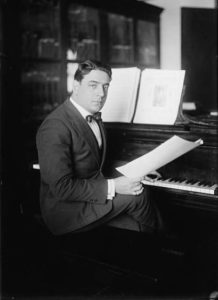
On This Day: Exploring Tito Schipa’s Diverse Artistry
By David SalazarOn Dec. 27, 1888, Raffaele Attilo Amedeo Schipa, better known as Tito Schipa, came into the world. Over the span of his 77 years, he would give the world glorious music in many forms. He was of course best known as a tenore di grazia, though he managed a number of Verdi and Puccini operas while conquering Italian roles by Donizetti and Massenet’s “Werther.”
He made numerous recordings around the world, including South America where he became popular for taking on the tango. He also worked as a conductor and appeared in the movies. He was also the tenor for whome Puccini created the role of Ruggiero in “La Rondine.”
His art was a diverse one and his numerous recordings bear to this. Here is a look at some of my personal favorite recordings that showing us the many sides of a rich artistry.
Una Furtiva Lagrima
Arguably his most famous recording, Schipa’s approach to bel canto is just that – the most glorious tenor singing one might imagine. Every phrase beautifully turned, the sustained notes filled with a sense of direction and purpose, guiding the listener along a beautiful musical journey. There is an intense passion in the singing and yet when compared with other entries on this list, it is clear that the tenor is employing a different color palette to suit the style of the music.
Il Lamento di Federico
In the famous video performance of this Cilea classic, we actually get a chance to see the tenor in action (albeit with distracting cuts to audience members). We hear see his stoic, upright stature and his immersion in more romantic repertoire. The lament comes through poignantly, which his conclusions to the main stanzas decidedly different. The first features a glorious sustained note that slowly withers away in the same vein as the “Furtiva Lagrima.” The second stanza sees his voice on a different emotional wave length, the intense up a notch, but the control always ever present.
O Sole Mio
As has been the case with many Italian tenors before and after, Schipa did not shy away from taking on local music. He has a poignant recording of this famed Neopolitan Song that differs in many respects from other renditions. Where many emphasize the nostalgic feelings, his interpretation rings with a vocal brightness and articulate rhythmic precision that gives it a cheerier tone.
La Cumparsita
Listening to Schipa take on tango is simply refreshing. The purity of sound and polish of phrase is still there, but the vocal color is different. The intensity and passion is also of a different matter, but just as mesmerizing as his operatic work. And listen to the crescendos and diminuendo at the end of the song, sound waves rocking back and forth.
Any Duet With Amelita Galli-Curci
Admittedly, this does not show him in a different musical style, but more as a great collaborator. There are many operatic duos that are admirable for their exquisite dramatic chemistry. In their numerous recordings together, Schipa and Amelita Galli-Curci display a vocal and dramatic unity that is so pure in its musicianship and simply beautiful to marvel at. I love how they meld their voices together in “Don Pasquale’s “Tornami a dir che m’ami.” Or their “Un Di Felice,” from “La Traviata” in which they manage a wondrous contrast to emphasize the dramatic contrast between Alfredo and Violetta. Never have I heard the two voices express such emotional contrast and yet blend so well together. It is musical craftsmanship of the highest order.
Did I miss any of your favorite Schipa recordings? Feel free to chime in with your thoughts on this great tenor as we celebrate his birthday and beyond!


